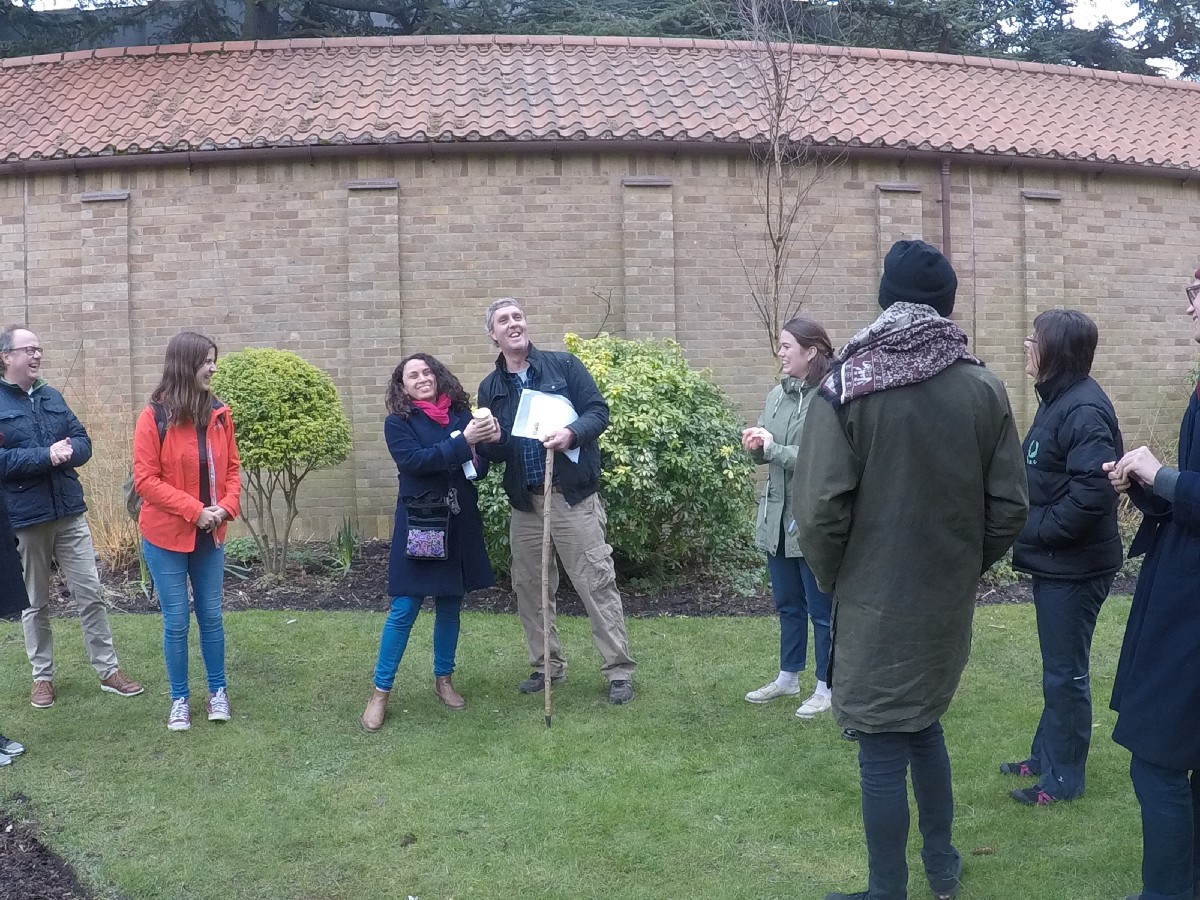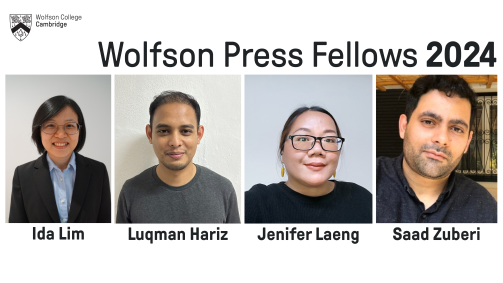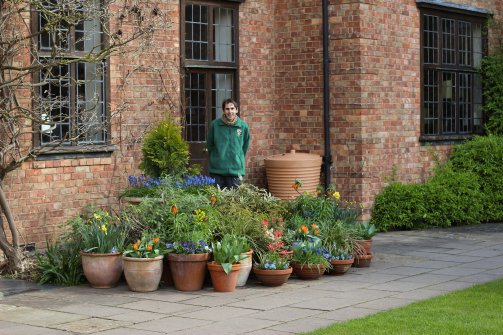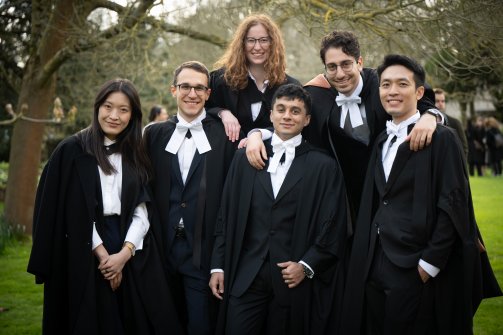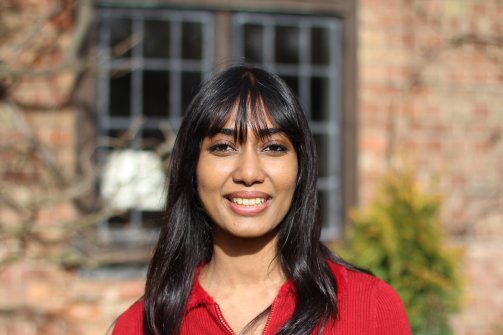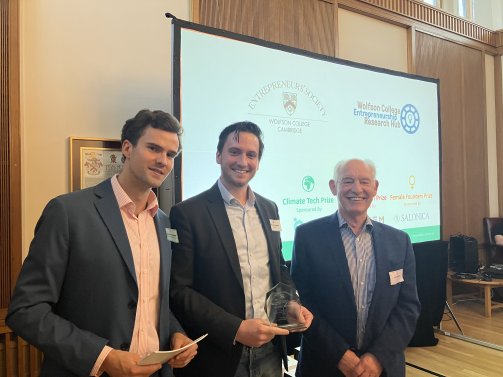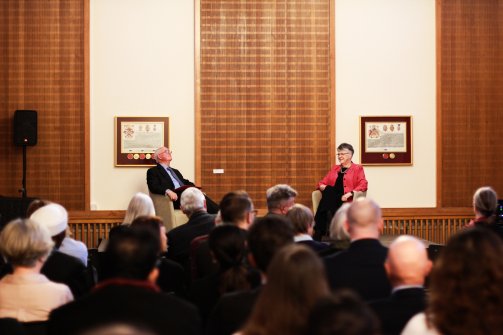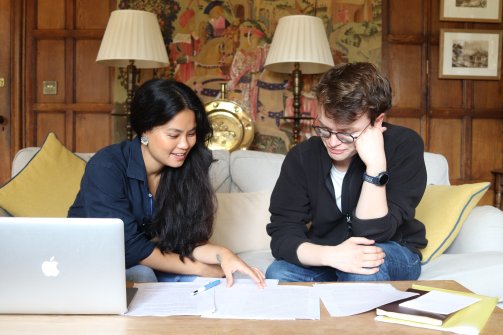The politics of time with Carolyn Smith
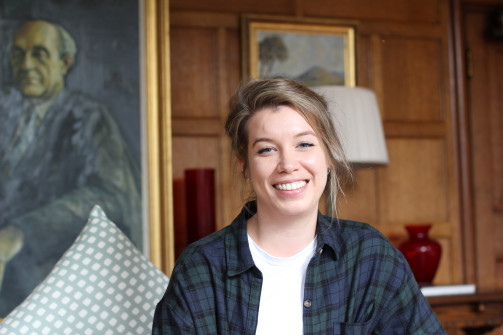
Bumpy or smooth? Plant cell shape and pollination
Gabriela is a PhD student in the Department of Plant Sciences.
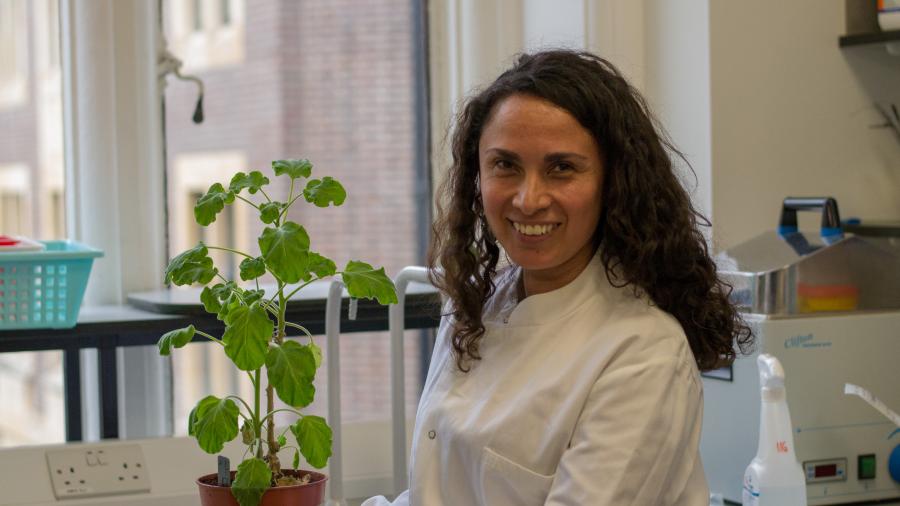
You work in the Evolution and Development Group at the Department of Plant Sciences, which is the lab of Professor Beverley Glover. A lot of work has come out of this lab on pollination and pollinators. Why is this an important area of research?
We are looking to understand the evolution and development of floral features that are important for pollination. We want to answer questions about these mechanisms, how have they evolved and their interaction with pollinators. These questions are important so that we can create strategies to protect the diversity of plants and animals. Moreover, understanding the process of pollination in an integrated way opens the door to collaboration with the agriculture sector to optimize crop pollinator attraction and to promote food security.
One particular area you study is the evolution of petal cell shapes. How do cell shapes contribute to the interaction between flowers and their pollinators?
At a microscopic scale, the shape of individual petal cells in flowering plants are of two different types. These cells can be conical, extending out of the surface of the petal, or they can be flat with a smooth surface. These differences in texture play important roles in the interaction between the flowers and their animal pollinators. Conical cells might benefit small pollinators (such as bees) by providing a protruding surface for the small claws of the insect to grip. Because of their optical properties, conical cells may also enhance colouration of petals by functioning as a light condenser. We think that these differences in texture might play additional roles in the ‘wettability’ of the petal and in regulating the temperature of the surface of the flower.
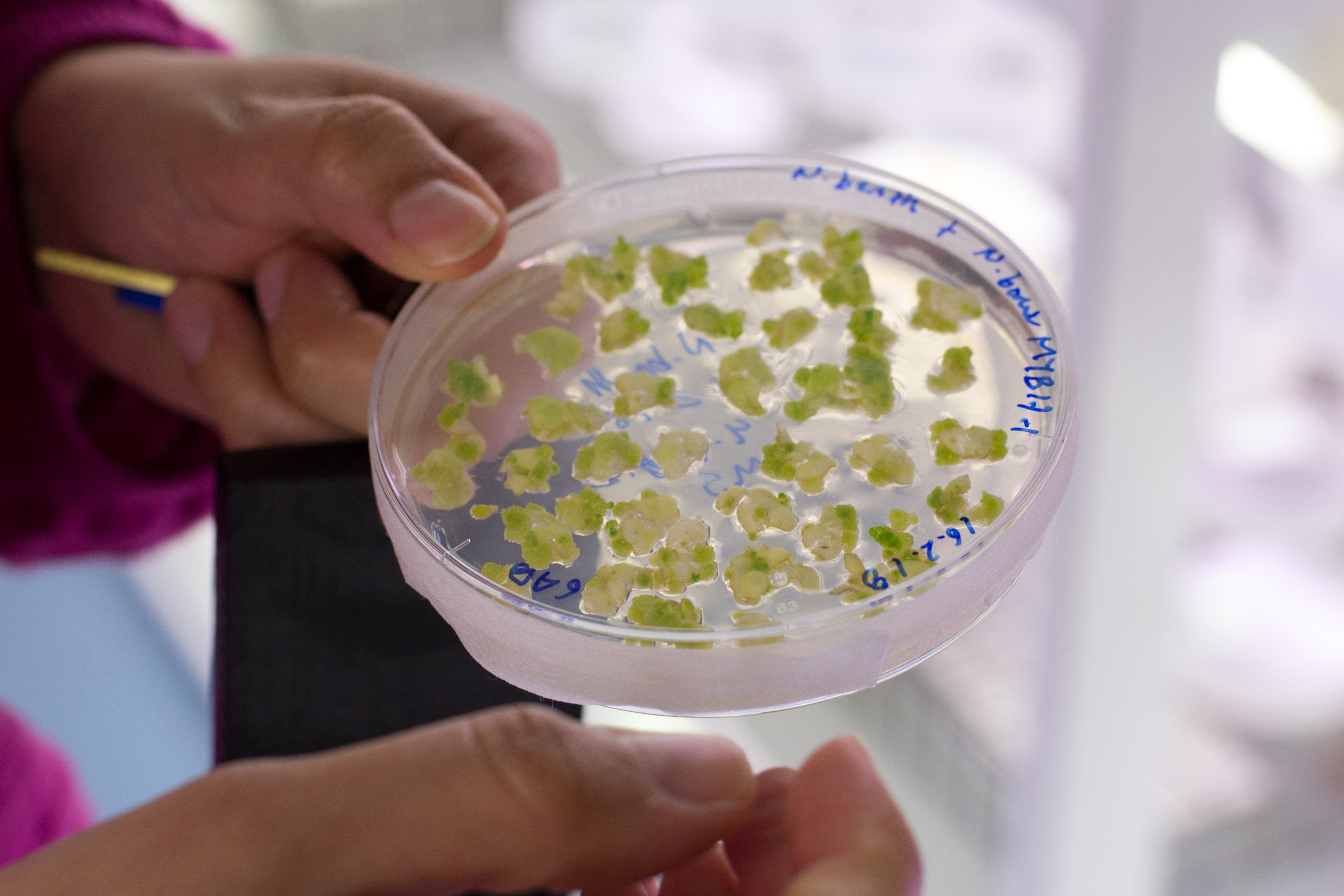
In cases where a pollinating insect does not land directly on the petal (ie moths or hummingbirds), is the petal cell shape relevant?
It might still be. Petal cell shape is not always homogeneous along the full surface of the petal that comes into contact with the pollinator. Some subtle differences in petal cell shape might give tactile clues or act as nectar guides for hovering pollinators. Wettability, colouration and petal surface temperature might also be a source of information or alternative rewards for these pollinators.
What kind of techniques do you use to discern plants at these microscales?.
To discern the textural patterns of petals at the microscopic scale I use methods such as transmitted light and scanning electron microscopy. I also use molecular biology techniques to explore the genetic bases of these patterns, and I test ideas on the potential function of these features in the interaction flower-pollinator in a bumblebee behaviour facility.
Which plant family do you work with and why?
I study the wild tobaccos, genus Nicotiana in the family Solanaceae (potato family). Nicotiana is a relatively small genus (70 species from the Americas and Australia), but it is very diverse in terms of its floral characteristics and its interactions with animal pollinators. From previous research, we know pretty well the phylogenetic relationships between the species of the genus. These aspects are important when we try to understand the evolution of one character, as they gives us a variety of hypotheses of relationships from which to develop our ideas.
For example, we have characterized petal cell shape in all species of Nicotiana, and we have plotted this diversity in the evolutionary tree of the group. This exercise allowed us to detect pairs of ‘sister’ species in which one has conical cells and the other does not. This gives us an exceptional opportunity to try to understand the evolution of this character in the genus. Moreover, most species of Nicotiana are annual herbs relatively easy to grow in the greenhouse (or even outdoors during the British summer). This is important for the type of work we do, as we need a constant supply of fresh healthy flowers to obtain the information we are looking for.
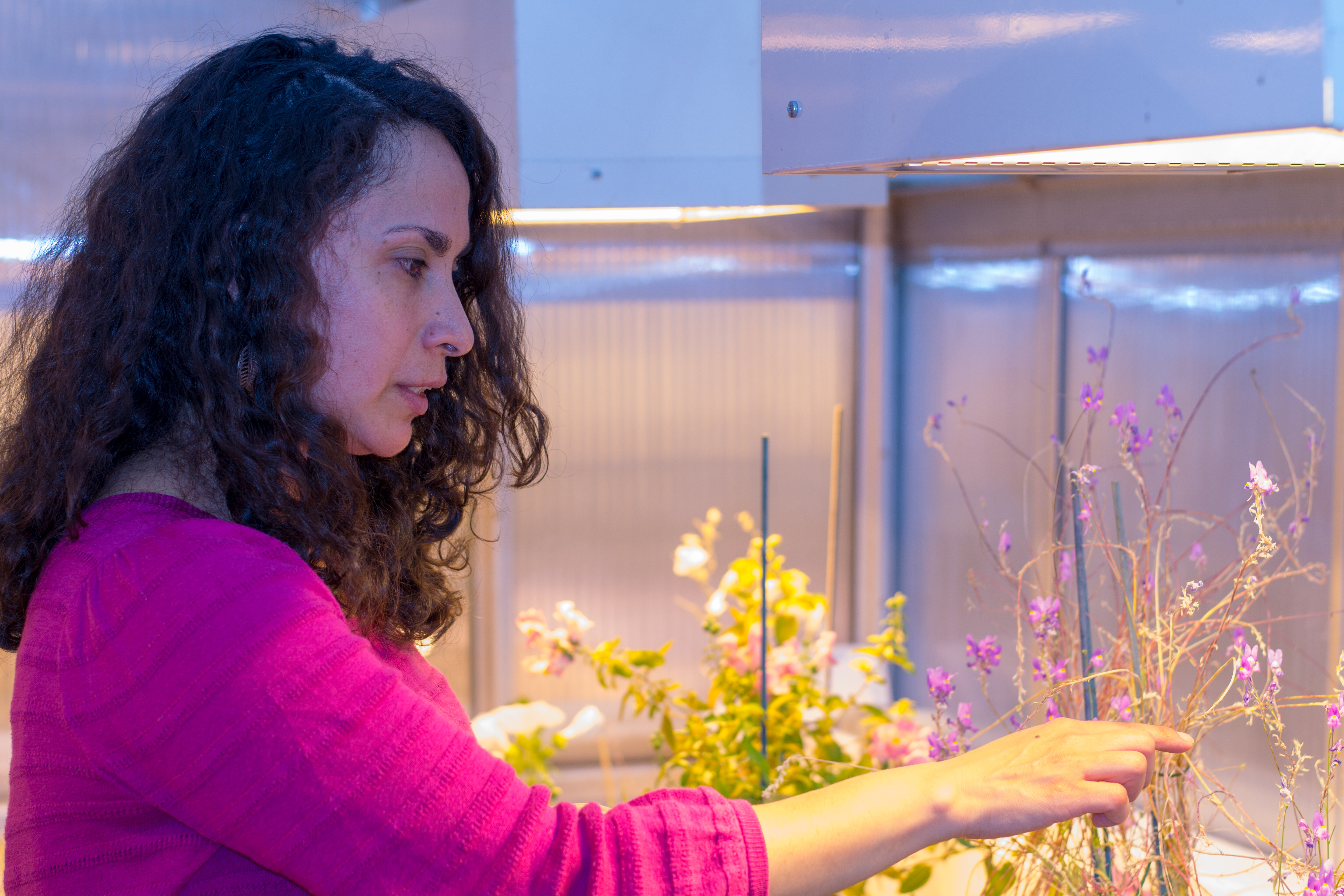
You are originally from Colombia and you did graduate work at Wesleyan and Yale in the US. What brought you to Cambridge and Wolfson College?
I had previously worked in paleobotany. When I was looking for the next step in my career, I came across Professor Beverley Glover’s laboratory on the internet. I have always been fascinated by why there are so many flowering plants and why they are so diverse. The work carried on in her lab sounded like a perfect match to explore this question in a very different way to the ones I had been working on before. I contacted Beverley and she gave me the opportunity to apply for a PhD position. Cambridge sounded not too bad at all.
Wolfson came to me during the application process from an exhaustive exploration of the options. In my search I focused on the mature/postgraduate colleges, and from those Wolfson stood out by being the most cosmopolitan. I also took into account the extracurricular options they offered (yoga being my favourite), the ‘green’ initiatives of the College and the fact they have up to three years of secured accommodation for PhDs. Of course, I was also immediately hooked by the beautiful Wolfson gardens!
Tell us about the Wolfson College Plant Society and your involvement with it.
The idea of creating a society came to me from a plant interest group I was involved with at Yale in Forestry and Environmental Studies. My friends and plant sciences colleagues at Wolfson, Alfonso Timoneda-Monfort and Gwen Davis, had a similar idea to create a group inspired by our fascination with plants. We founded the society in 2016 with the support of WCSA.
With this society we promote interest in botany, horticulture and plant science — in fact all aspects of plants. During our first two years we have walked the Wolfson gardens, visited the University Botanic Gardens and Herbarium Collection, explored Cambridgeshire’s meadows looking for wild orchids and run multiple plant-inspired activities in the College. Now the College is starting a Student Garden and we are very excited about that too!
